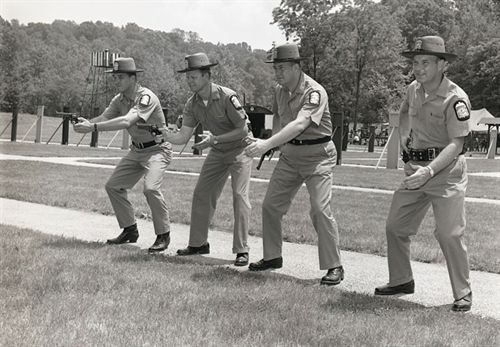
The firearms community has grown phenomenally over the last 25 years, and continues to show amazing improvements in manufacturing, innovation, and skills training to complete the experience. These advancements have helped law enforcement respond to increasingly complex critical incidents. The development of highly accurate bean bag rounds as a less lethal option, polymer striker-fired handguns that reduce weight but improve accuracy through consistent trigger pulls, and the implementation of the Taser are just a few of examples of technological advances that have enhanced the law enforcement response to threats in our communities.
However, despite all the impressive improvements there is still one area that remains a matter of significant concern in use of force training – the targets that we engage in practicing deadly force engagements. Though we have made significant steps beyond the simple bulls eye targets of the early 20th century, including interactive, printable, and steel targets, the silhouette targets being used by too many are simply preparing officers to fail.
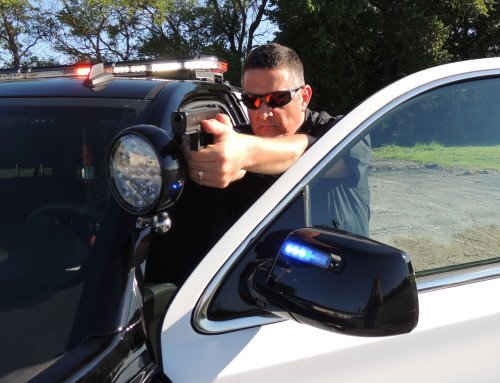
This is a 2-part series on Firearms Training with realistic targets. Part I will cover the common types of targets being used in law enforcement today, with dialogue on the good and bad these targets can produce to the officers being trained. In Part II, titled “Winning Deadly Force Encounters” we’ll continue the discussion about critical shot placement that will lead to winning a deadly force encounter and not just surviving one.
Shoot Like You Mean It!
In a deadly force engagement the threat must be stopped as quickly as possible. Firearms instructors have a duty and responsibility to train their students to win – not just survive a deadly force encounter. Hollywood and television have done a tremendous disservice to America’s law enforcement officers. In the shows, the police actors can routinely shoot a firearm out of the bad guy’s hands, or shoot them in the leg so they can be captured easily.
However, police officers know that every trigger pull is using deadly force, regardless of where the bullet ends up striking. Officers also know that in real life deadly force encounters, acting in such reckless behavior by shooting at extremities that are much harder to hit, unnecessarily prolongs the deadly event and endangers the officers, innocent civilians, and the threat themselves. The safest way to stop a deadly threat is to shoot the threat in vital organs and structures that will disrupt the Central Nervous System (CNS).
The Central Nervous System (CNS)
The Central Nervous System (CNS) comprises the person’s brain and spinal cord. These components control the electrical receptions and signals that receive information and cause the body to move. Compromising either one of these components will cause an electrical shut-down of the deadly threat. This is particularly true about the mystical and oft misunderstood Medulla Oblongata.
In the case of the brain, the impact can literally be a “lights out” moment where all action ceases. A hit in the cranial vault is the surest method to stop the deadly threat. By disrupting the threat’s “computer server”, their body cannot complete actions because the electronic signals to do so have been disrupted. The cranial vault is a large enough target to satisfy the highly dynamic realities of a deadly force encounter.
The Medulla Oblongata is a part of the brain stem, where the brain and spinal cord connect. This area is the control center for unconscious actions, so it has been particularly favored as a targeting spot by snipers who may be called upon to neutralize a hostage taker. Taking out the Medulla Oblongata will prevent any flinching that may allow a hostage taker to fire into the hostage. However, the Medulla Oblongata is about the size of a thumb nail, and surrounded by bone and flesh. In short, a bullet to the brain is highly likely to satisfy the “lights out” effect. The Medulla Oblongata is an unrealistic targeting area, as we will discuss in-depth in Part II of this series.
When the spinal cord is impacted we can expect to see paralysis or significant motor dysfunction below the area of impact. Though not a “lights out” moment, nevertheless we have interrupted the electronic control system of the adversary and have likely caused a serious malfunction of their ability to continue being a threat. However, like the Medulla Oblongata, the spinal cord is a relatively small target on a human threat that is likely going to be moving dramatically during the shooting engagement.
Upper Chest Targeting
The upper chest of an adversary is the primary targeting point during a deadly force encounter. The reason for this is that it is one of the largest targeting areas on the threat’s body, and the torso is much harder and slower to move than the head. In addition, the upper chest contains the heart and lungs, which are vital to the adversary’s ability to remain a threat.
By injuring the heart, we compromise the threat’s ability to pump blood to provide oxygen to their muscles and extremities. Without that oxygen, the muscles fatigue, and begin to lose function. Additionally, the brain is a huge consumer of blood, and without freshly oxygenated blood the threat’s cognitive ability to remain in the fight is quickly diminished. The heart is in the center of the upper chest, making it an ideal and easy targeting location. However, we should not expect a “lights out” moment simply because we hit the threat’s heart (see the Trooper Coates video below).
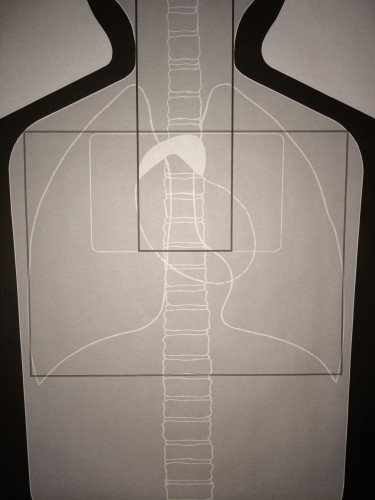
The lungs are also in the upper chest, on either side of the heart. The problem with the lungs is that each person has two, and can still function with only one working lung – though in a lesser capacity. The lungs provide oxygen to the blood, which is then pumped by the heart to the entire body. Reducing the threat’s ability to take in oxygen, especially in high stress situations that demand more oxygen, will have a very good effect.
However, it takes time for the effects of a lung shot to begin reducing the threat’s ability to remain in the fight. A motivated adversary can still present a serious deadly threat for some time with only a lung shot. As such, the lungs or only a secondary targeting area, with the head and spinal cord following – due to their highly reduced targeting area.
Targeting Targets
With the CNS targeting in mind, the next few paragraphs will discuss several of the most common types of targets being used in the firearms instruction community today. I will weigh in on the positives and negatives of each type of target, but the focus will be directed back to the point of this article – in self-defense shooting training an instructor must prepare students to win. This can only be accomplished through realistic training scenarios that require the student to process a dynamic scene, properly assess shoot and no-shoot targets, and then engage the threats with accurate fire to the parts of the human body that will cause the quickest disruption of the threat’s ability to continue to fight.
Bulls Eye Targets
These types of targets have been around for 100 years, and have been used widely by many different groups. There is nothing wrong with using bulls eye targets to hone an officer’s precision shooting. In fact, this type of target is one of the best for dialing an officer’s shots into tight, repeatable groups.
These targets are a great way to evaluate an officer’s overall shooting platform, including their grip, sight alignment, breathing and trigger squeeze. Minor inputs will clearly show up, and an instructor can evaluate and guide the officer back into a solid practice of precision shooting. This type of training is very important in the overall development of an officers’ ability to successfully fire their weapon, and their ongoing marksmanship skills.
Developing muscle memory under very strict measurements is one of the ways a person develops consistent accuracy and effectiveness during higher stress engagements. The sub-conscious mind actually recalls the muscle memory and takes the body into a memorized set of movements. The conscious mind can then remain focused on the OODA loop; such as, threat assessment and shoot/no-shoot decisions, as well as other important actions like moving and communicating.
However, the bull’s eye target should only be used in skill development and maintenance, and never in self-defense training. Firearm instructors should make the self-defense shooting environment as realistic as possible so the officers can create memories that can be recalled in high stress incidents. In essence, when the officer is faced with a deadly threat the images should not be totally foreign to them. Instead, the officers should immediately recall training, and respond with, “O.K., I’ve been here before, and I know what to do.”
Steel targets can be very good for helping to build the basic skills of shooting. They provide instant feedback on a hit which gives the shooter positive reinforcement. At longer ranges, steel targets can also eliminate the need to call a cold line every time you need to move forward and check to see where the shots are hitting. With a properly sized target for the level of precision to which you are training, you can immediately hear a “ping” that lets you know that the shots are where they need to be.
The B-27 Law Enforcement Training Target
Ever seen this target? I can’t tell you how many times I’ve shot this target, or its all green cousin, during training and qualification. This target is still one of the most widely used training targets in the law enforcement community, but in my opinion it should be banned!
The B-27 target is nothing more than a bull’s eye target with a darkened silhouette background. There is absolutely no scientific reasoning for the targeting areas and their point value. The B-27 target was simply the culmination of police administrators wishes and lazy firearm instructors to perpetuate the concept of “shoot center mass“.
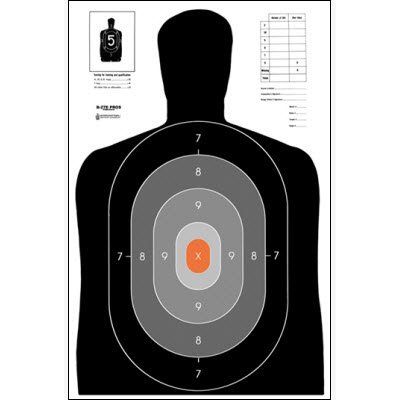
Let’s think about that statement for a minute. Shooting “center mass” does have some practical truths and functional relevance. In a dynamic deadly force situation we want officers to put rounds into the threat. The easiest way to do that is to shoot for the middle of the largest part of the threat’s body – the center mass of the upper body.
Take a look at the B-27 target. The X-ring is in the center mass (happy administrators and happy lazy instructors). However, when the human anatomy is considered for the silhouette of the B-27 target, we quickly realize that “perfect” X-ring shots are going to strike the threat in the stomach or abdomen. Though this would be a painful hit, that would likely require extensive surgery to fix, the rounds do not hit any of the vital Central Nervous System, or the circulatory system components to create a motor dysfunction. Without motor dysfunction a motivated threat will continue to be a threat – often to the demise of the officer. Nobody wants to walk around with a colostomy bag, but it is survivable. Lower organ damage will not guarantee that the threat stops.
Administrators are terrified that an errant round will hit an innocent bystander or destroy private property, and they want to control that as much as they can. The lazy instructors are either eating the company line bit by bit, or they did not use due diligence to study their craft and understand how a gunfight is won. Either way the result of training to shoot to “center mass” is disastrous for officers in the field.
However, for an instructor that must train a wide range of skill levels, the B-27 is appealing because it is designed to pass officers on a qualification course. Let’s face it, an officer can shoot a pattern like a shotgun blast and likely pass the minimum scoring standard required by their State. That makes the administrators happy, and the lazy firearm instructors happy (they don’t have to spend extra time training the difficult shooter), but leaves the officer woefully unprepared to win.
I remember watching the Trooper Coates video in my Academy class and other courses. Trooper Coates fired 4 of 5 of his .357 magnum rounds into the “center mass” of his killer. However, the killer was able to fire back, striking Trooper Coates in the arm pit, where the .22 cal. bullet travelled into his heart and killed him. That death was not instantaneous, rather it took several agonizing minutes for the wound to complete its job. Officers should take note of that, and realize that even a perfect heart shot may not immediately stop the threat. I wonder what type of targets Trooper Coates was trained on during his tenure with the South Carolina Highway Patrol?
As such, I firmly believe that law enforcement agencies and reputable self-defense instructors should completely abandon the B-27 target for any kind of firearms training. There is just too much damage to proper aiming points.
The F-TQ19ANT-MCSD Law Enforcement Training Target
The F-TQ19ANT-MCSD law enforcement training, from Law Enforcement Targets, target is one of the best targets on the market to train officers for deadly force encounters. The target combines a human silhouette with the vital organs that need to be targeted to stop a deadly threat. In addition, this target further compartmentalizes the key targeting areas into a “general” area and a more “specific” targeting area.
By dividing the target in this manner firearms instructors can explain the importance of the targeting locations, and work to get officers firing into the best stopping areas. As distance to the threat increases, larger targeting area outlines can be used as acceptable areas. Each outlined area can be explained for its relevance and importance in targeting.
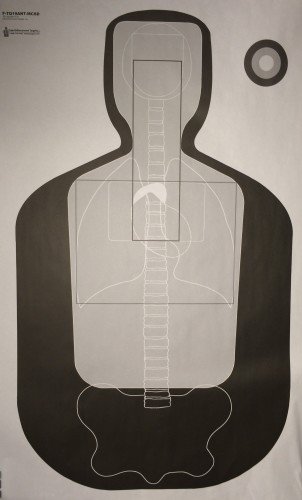

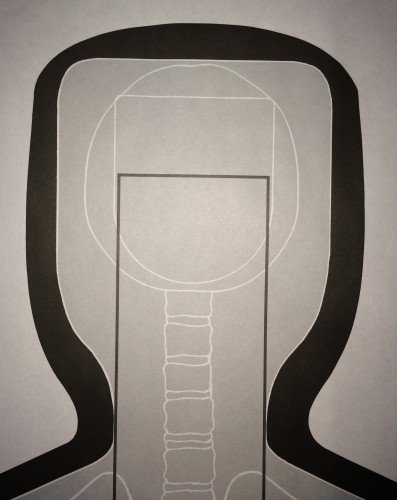
The F-TQ19ANT target comes in a few variations that increase its viability for advanced deadly force encounter training target. One of those variations is the F-TQ19ANT-SAPD, which subdues the targeting box and organ outlines, making the officer show their mastery of the appropriate targeting areas. Even more importantly, the SAPD version includes the addition of a hand aiming a pistol at the officer. This is a very important addition, as it further trains officers to identify a deadly threat before engaging in deadly force.
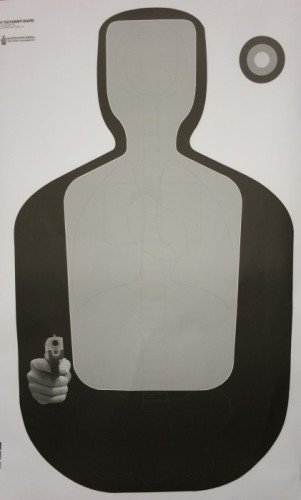
With the targeting box outlines and organ lines subdued, the officer is required to understand the human anatomy from their previous training with the original target, and then place shots in the appropriate areas without the benefit of seeing the lines easily. This is a great target to test the officer’s advanced shooting abilities after they have successfully performed the fundamental drills and passed.
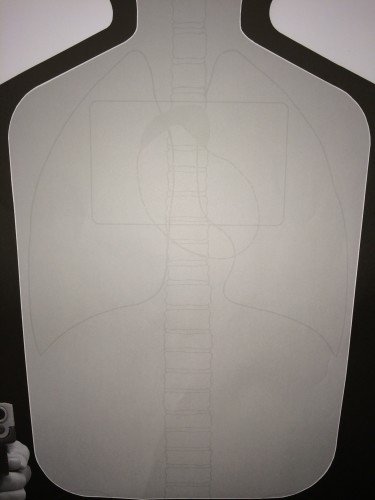
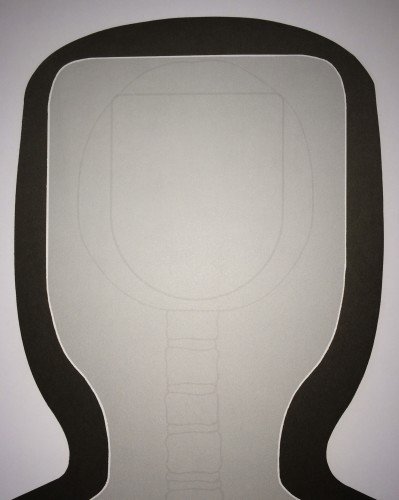
Final Thoughts
The targets we choose to shoot at have incredible significance in the overall quality of our officer’s marksmanship and survivability in a deadly force encounter. Using bulls eye targets to hone marksmanship is an absolutely perfect job for those targets. Once training advances to surviving deadly force encounters; however, the profession owes the officer the benefit of training that realistically gives the officer the best opportunity to win the fight – not just survive!
The selection of targets for this purpose should provide the officer the mental and muscle memory that will subconsciously return to them in the critical event. The targets should force the officer to account for their aim, and place their shots in the most critical parts of their adversary’s body that will produce the quickest and most efficient motor dysfunction. Targets that have officers shooting in the stomach are antiquated death traps for officers. It’s time to move on to advanced targets that highlight the human anatomy that will get the job done.
Zac says
Good morning, Zac from Iowa here. I teach this exact same thing in my permit to carry classes. As a 2 tie combat vet, I’ve seen first hand how shot placement can make or break a gunfight. I’m not a thief of personal or intellectual property so I thought I would ask if you minded me printing off your superbly worded document here to add to my class packet.
Respectfully,
Zac Fox